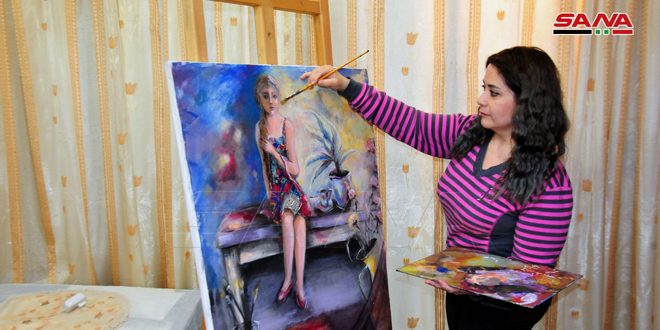The human and aesthetic values of women are the prominent title of the work of the artist, Majd Makarem, who has proven a distinctive presence in the world of art, expressing the hopes, thoughts and dreamy feelings inside a woman.
SANA quoted Makarem as saying that she had held her first exhibition in 2014, which was a difficult step for her, as her artistic experience had not matured, pointing out that her participation in the exhibitions and forums held in Beirut, Dubai and Amman was an opportunity for her to enrich her artwork, by learning about the experiences of artists in this field.
Makarem’s methods varied due to the diversity of her subjects, but she did not leave the vast banks of the expressive school, which has overwhelmed her works . This unleashed her feelings to float on the surface of her paintings with the use of a broad spectrum of color and the strength of its expression as a means of embodying her feelings and visions with a variety of aesthetic artistic images..
She went on to say that the presence of women in her works has been adopted as a self-standing world based on her ability as a female to express, honestly, her feelings and the potentials of herself in color, vision, rhythm, clarifying that she cannot put forward steps for a subject or idea of work, but leaves her feelings and interactions with the painting to choose the subject of work, which comes through a mixture of emotions that she shared with the portrait over a period of time.
The artist’s work shows her to be influenced by the environment, her reading and her relationships with society, using most color technologies according to data and spirit expressions.
On the artistic experience of Makarem, the artist, Hanan Abu Fakhr, stated that Makarem has her own alphabet.
She expresses her ideas simply, avoiding complexity and trying to create harmonious color vocabulary that has no choice but to continue.
It is noteworthy that the plastic artist Majd Makarim was born in 1975. She graduated from the Department of Sculpture at the Faculty of Fine Arts at the University of Damascus in 1996. She has many individual and group exhibitions and forums. Her artwork is acquired inside and outside Syria
Amal Farhat


 Home
Home